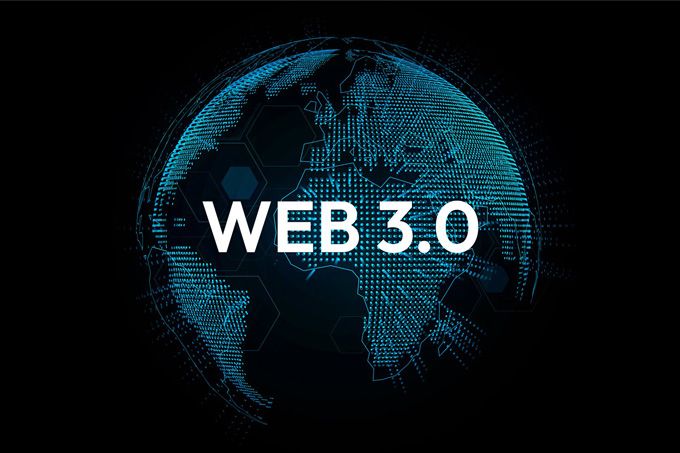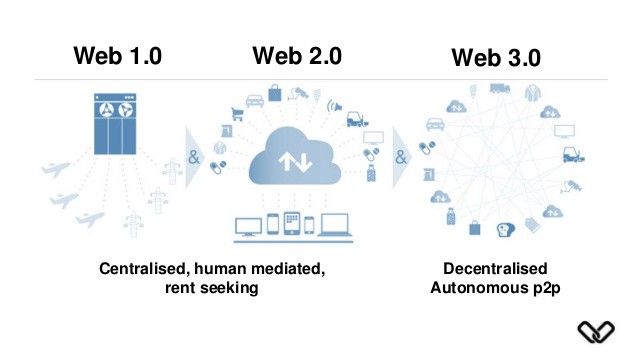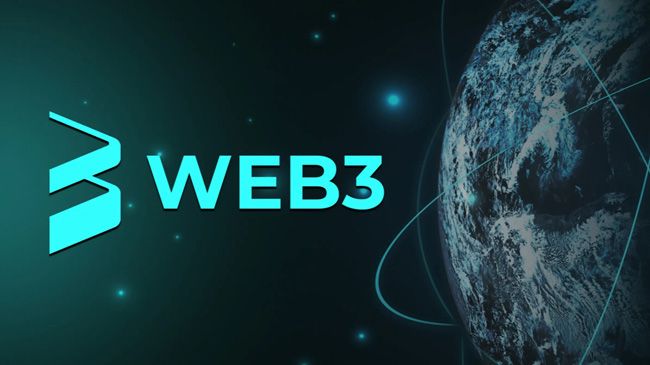
.What is Web 3Links to an external site.? A Beginner's Guide to the Future Decentralized Internet
Web 3 Possible future versions of the Internet are based on the public blockchain, a record-keeping system best known for facilitating digital currency transactions. The appeal of Web 3 is that it is decentralized, meaning that instead of consumers accessing the Internet through services such as Google, Apple, or Facebook, individuals own and manage parts of the Internet.
Web 3 does not require "permission", meaning that central authorities Can’t decide who has access to what services, nor does it require "trust", meaning that there is the ability to conduct virtual transactions between two parties. An intermediary is not required.
Because these agencies and intermediaries have a lot of information, Web 3 technically protects users' privacy better.
Decentralized finance, often referred to as DeFi, is part of the growing Web 3. This requires real-world financial transactions on the blockchain without the assistance of banks or the government. Meanwhile, many large corporations and venture capital firms are injecting money into Web 3, and it is not far-fetched to think that their interaction would lead to some kind of centralized power.
In this article, Tomorrow's Leaders website, how the web evolved, "Why is everyone talking about Web 3?", "What is Web 3 used for?", "What is Web 3 in crypto?", "Where is Web 3 going?" » And "Why Web 3 is Important?" We will review.
Web evolution
The World Wide Web is the main tool for billions of people to share, read and write information and communicate with others via the Internet. The web has changed dramatically over the years, and its current uses are so far removed from its early days that it is almost indistinguishable from its early days. Web evolution is often divided into three stages: Web 2, Web 1, and Web 3.
The first version of the Internet was known as Web 1.0. Think of Web 1 as a read-only version. Most people were content consumers, while developers were mostly web developers who created websites with content that was mostly presented in the form of text or pictures. Web 1 existed from about 1991 to 2004.
Sites provided static content instead of dynamic hypertext markup language (HTML) on Web 1. Data and content were generated from a fixed file system instead of a database, and there was little interaction on web pages.

What is Web 2
Many of us have only seen the web in its current version, often referred to as Web 2, also known as interactive and social web reading and writing. You do not need to be a developer or programmer to participate in Web 2. Many programs are designed in such a way that anyone can create an effect.
You can create an idea and share it with the rest of the world. You can also post a video and make it available to millions of others to watch, interact with, and comment on Web 2. YouTube, Facebook, Flickr, Instagram, Twitter, and other social media are just a few examples of Web 2 apps.
Web technologies, such as HTML5, CSS3, and JavaScript frameworks, such as ReactJs, AngularJs, VueJs, and more, enable companies to develop new ideas that allow users to do more on the web. Socially participate.
As a result, developers only need to design a mechanism to activate and engage users because Web 2 is built around them.
Consider how different eminent apps like Instagram, Twitter, LinkedIn, and YouTube were in their early days compared to the current situation. All of these companies usually go through the following steps:
-
- The company launches an application.
- Attracts and registers people as much as possible.
- It then monetizes its database.
When a developer or company launches a popular program, the user experience with it is often incredibly enjoyable, especially as the program grows in popularity. This is why they can achieve attraction very quickly at first. Many software businesses do not initially worry about making money.
People can make a living by participating in the protocol in a variety of ways, both technical and non-technical. Consumers of this service usually pay to use the protocol, for example, to pay a virtual service provider such as Amazon Web Services. Like many forms of decentralization, unnecessary and often futile intermediaries are eliminated.
In addition, Web 3 relies heavily on proxy tokens, digital currencies, and other blockchain entities. Reddit, for example, is trying to break into Web 3 by creating a mechanism for using cryptocurrencies to allow users to control substantial parts of the local community in which they participate.
In the sense that users use "community privileges", which they gain by posting on a specific "subreddit". The user then scores based on the number of users who voted positively or negatively for a particular post. This is simply a blockchain version of Reddit Karma.
These concessions can be used as voting shares and allow users who have made significant contributions to have a greater impact on choices that affect the community. Because these points are stored in the blockchain, their owners have more control over them.
They Can’t be easily eliminated, and they will follow you. To be fair, this is just one example. The corporate version of Web 3 Idea, known as Decentralized Autonomous Organizations (DAOs), uses tokens to more evenly distribute ownership and members' decision-making power.
?definition of web 3

?Web3 wallet
What are the features of Web 3
Moving from Web 2 to Web 3 happens slowly and without attracting public attention. Web 3 applications look and feel similar to Web 2 applications, but their performance is fundamentally different.
The future of Web 3 will lead to global applications that can be read and used by a wide variety of devices and applications, making our business and leisure activities easier.
With the advent of technologies such as distributed ledger and blockchain storage, it will be possible to decentralize data and create a transparent and secure environment that challenges the pointless focus, monitoring, and advertising of Web 2.0.
In a decentralized web, people can control their data properly when decentralized infrastructures and application platforms replace centralized technology companies.
Let's take a look at the two features of Web 3 to better understand its intricacies and subtleties.
Semantic web
The Semantic Web is a vital component of Web 3. The term was coined by Berners-Lee's team to describe a network of data that machines can analyze.
The two cornerstones of Web 3 are the Semantic Web and artificial intelligence. The Semantic Web helps teach computers the meaning of data and allows artificial intelligence to develop real-world applications that can make better use of data.
The basic concept is to create a set of information and knowledge across the Internet that helps to understand the meaning of words and to produce, share and connect content through search and analysis. Web 3 facilitates more data communication thanks to semantic metadata. As a result, the users will reach a new level of connection and experience this improvement that takes advantage of all available data.
3D graphics
Web 3 will transform the future of the Internet from a simple 2D web to a 3D and more real cyber world. Websites and Web services such as e-commerce, online gaming, and the real estate market make significant use of 3D design.
This may sound strange, but thousands of people around the world are already interacting with Web 3. Take online games for example Second Life or World of Warcraft, in which participants are significantly more concerned about the health of their virtual avatars than their real counterparts.
?Web3 token
?web 3 what is it

 icons at the top right corner of the subsection.
icons at the top right corner of the subsection.